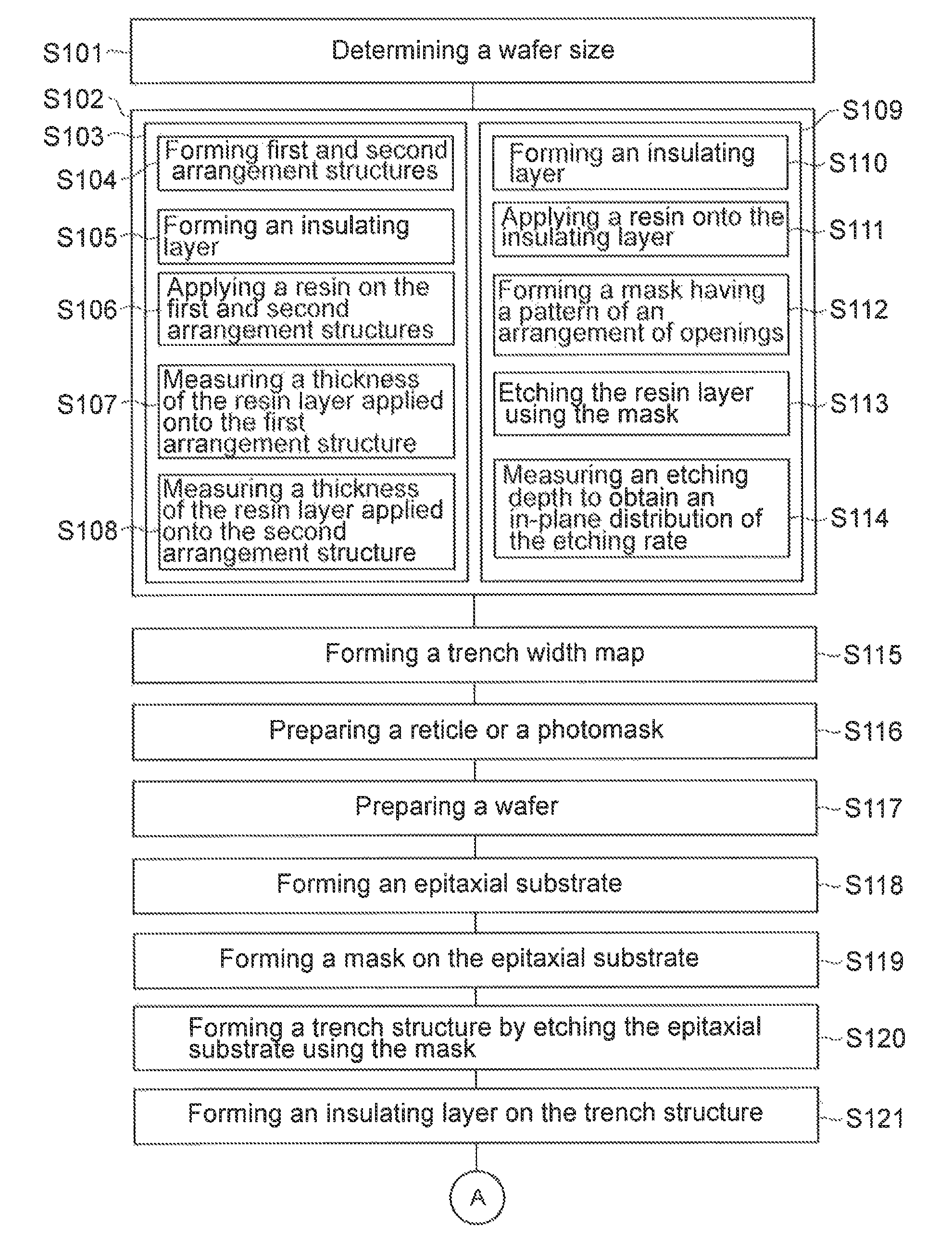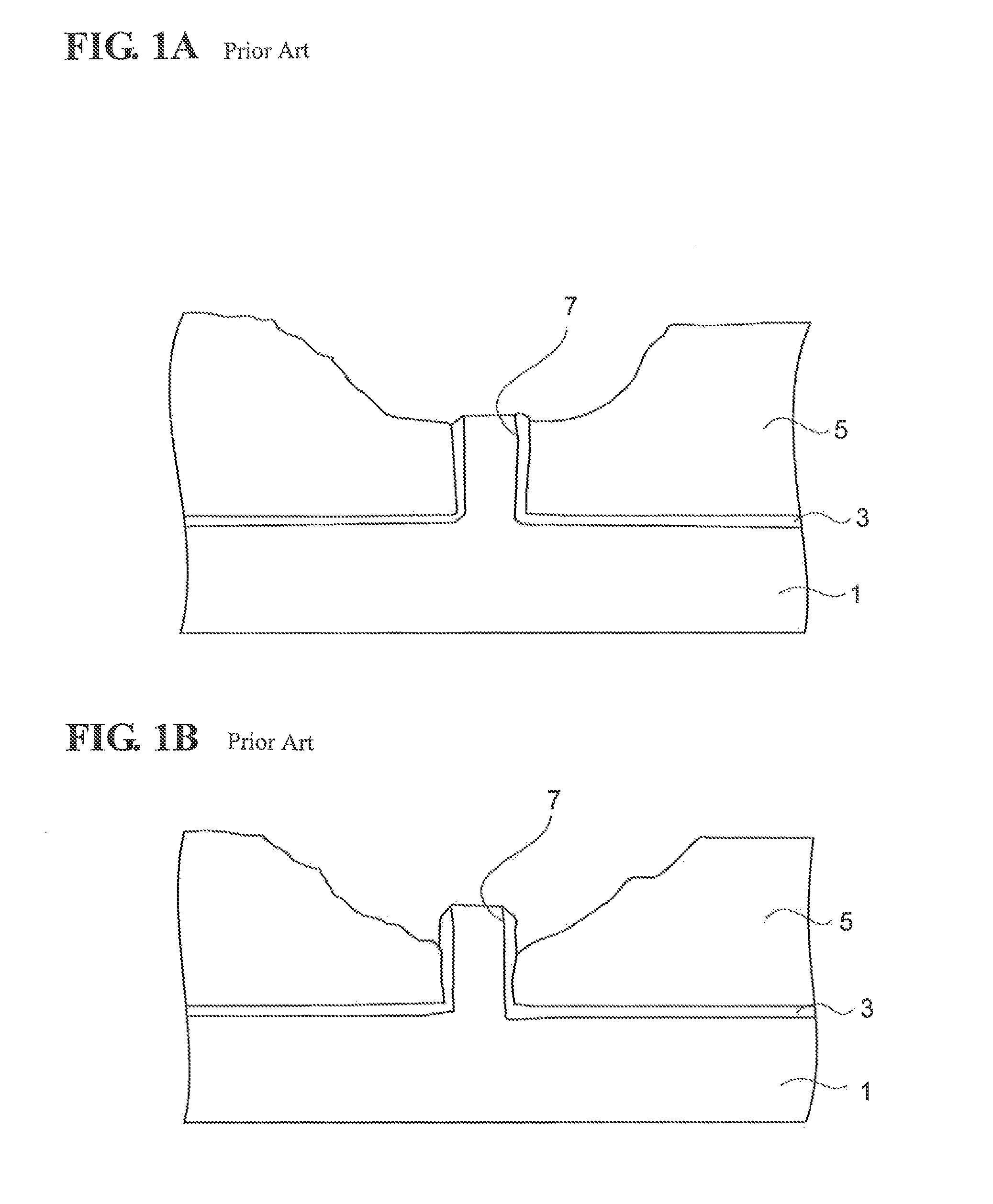Method for producing optical semiconductor device
a semiconductor and optical technology, applied in semiconductor/solid-state device testing/measurement, instruments, other domestic articles, etc., can solve the problem of difficult to form a resin layer on the wafer with a uniform thickness, and achieve the effect of improving the uniform thickness distribution of resin, reducing the opening, and adjusting more accurately
- Summary
- Abstract
- Description
- Claims
- Application Information
AI Technical Summary
Benefits of technology
Problems solved by technology
Method used
Image
Examples
example
[0093]A method for designing a mask whose trench width is corrected to make the opening shape of a BCB resin layer uniform in a wafer plane will be described. In this Example, the exposure that uses a stepper will be described. The description can also be applied to the exposure that uses a mask aligner.
[0094]To obtain the relationship between the trench width and the thickness of the BCB resin layer on a semiconductor mesa, the height of the semiconductor mesa, the width of the semiconductor mesa, and the thickness of the BCB resin layer on the semiconductor mesa are determined. One example is shown below.[0095]Height of semiconductor mesa: 3 μm[0096]Depth of isolation mesa: 0.8 μm[0097]Width of semiconductor mesa: 1.5 μm[0098]Thickness of BCB resin layer on semiconductor mesa: 3 μm
The used reticle has two types of patterns. A single reticle has a pattern in which the trench width beside the semiconductor mesa is fixed to measure the thickness distribution of the BCB resin layer in...
PUM
| Property | Measurement | Unit |
|---|---|---|
| width | aaaaa | aaaaa |
| height | aaaaa | aaaaa |
| thickness | aaaaa | aaaaa |
Abstract
Description
Claims
Application Information
 Login to View More
Login to View More - R&D
- Intellectual Property
- Life Sciences
- Materials
- Tech Scout
- Unparalleled Data Quality
- Higher Quality Content
- 60% Fewer Hallucinations
Browse by: Latest US Patents, China's latest patents, Technical Efficacy Thesaurus, Application Domain, Technology Topic, Popular Technical Reports.
© 2025 PatSnap. All rights reserved.Legal|Privacy policy|Modern Slavery Act Transparency Statement|Sitemap|About US| Contact US: help@patsnap.com



